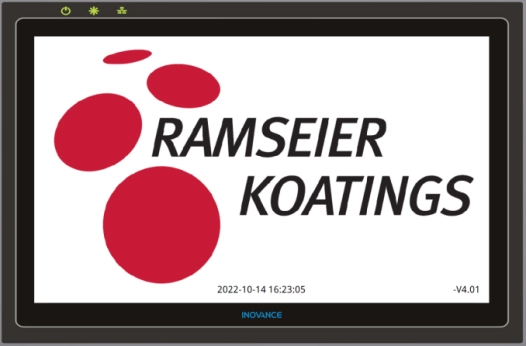Content Menu
● Understanding Smart Control Systems
>> What is a Smart Control System?
>> Importance in Automated Finishing
● Key Considerations for Selecting a Smart Control System
>> 1. Integration Capabilities
>>> Seamless Connectivity
>>> Interoperability
>> 2. User-Friendly Interface
>>> Intuitive Design
>>> Customization Options
>> 3. Advanced Automation Features
>>> Predictive Maintenance
>>> Adaptive Control
>> 4. Energy Efficiency
>>> Monitoring and Reporting
>>> Eco-Friendly Features
>> 5. Scalability
>>> Future-Proofing
>>> Modular Design
● Evaluating Vendors and Solutions
>> 1. Vendor Reputation
>> 2. Customer Support and Training
>> 3. Case Studies and References
● Implementation Best Practices
>> 1. Conduct a Needs Assessment
>> 2. Pilot Testing
>> 3. Continuous Improvement
● Conclusion
● Frequently Asked Questions
>> 1. What are the key features to look for in a smart control system?
>> 2. How can a smart control system improve efficiency in automated finishing?
>> 3. What is the importance of vendor reputation when selecting a smart control system?
>> 4. How can I ensure that the smart control system will meet future needs?
>> 5. What steps should I take before implementing a smart control system?
In the rapidly evolving landscape of manufacturing, the integration of smart control systems in automated finishing processes has become essential for enhancing efficiency, quality, and adaptability. This article explores the best practices for selecting a smart control system tailored to the unique needs of automated finishing operations.

Understanding Smart Control Systems
What is a Smart Control System?
A smart control system refers to an advanced automation solution that utilizes sensors, software, and data analytics to monitor and control manufacturing processes. These systems enable real-time adjustments, predictive maintenance, and improved operational efficiency.
Importance in Automated Finishing
Automated finishing processes, such as painting, coating, and polishing, require precision and consistency. Smart control systems enhance these processes by providing:
- Real-time monitoring: Continuous oversight of operations to ensure quality and efficiency.
- Data analytics: Insights into performance metrics that help in decision-making.
- Flexibility: Ability to adapt to different product specifications and production volumes.
Key Considerations for Selecting a Smart Control System
When selecting a smart control system for automated finishing, several critical factors must be considered:
1. Integration Capabilities
Seamless Connectivity
A smart control system should easily integrate with existing machinery and software. Look for systems that support standard communication protocols (e.g., OPC UA, MQTT) to ensure compatibility with various devices and platforms.
Interoperability
Choose a system that can work with different brands and types of equipment. This flexibility allows for gradual upgrades and expansions without the need for complete overhauls.
2. User-Friendly Interface
Intuitive Design
The control system should feature an intuitive user interface that simplifies operation and monitoring. A well-designed dashboard can enhance user experience and reduce training time for operators.
Customization Options
Select a system that allows customization of the interface to meet specific operational needs. This can include tailored dashboards, alerts, and reporting features.
3. Advanced Automation Features
Predictive Maintenance
Look for systems that incorporate predictive analytics to forecast equipment failures before they occur. This feature can significantly reduce downtime and maintenance costs.
Adaptive Control
The ability to adjust parameters in real-time based on feedback from sensors is crucial. Adaptive control systems can optimize processes dynamically, improving quality and reducing waste.
4. Energy Efficiency
Monitoring and Reporting
Choose a system that provides detailed energy consumption reports. Understanding energy usage patterns can help identify areas for improvement and reduce operational costs.
Eco-Friendly Features
Consider systems that support energy-saving modes or integrate with renewable energy sources. This not only lowers costs but also aligns with sustainability goals.
5. Scalability
Future-Proofing
Select a system that can grow with your business. Scalability is essential for adapting to changing production demands and incorporating new technologies as they emerge.
Modular Design
A modular system allows for incremental upgrades, making it easier to implement new features or expand capabilities without significant disruptions.
Evaluating Vendors and Solutions
1. Vendor Reputation
Research potential vendors to assess their reputation in the industry. Look for companies with a proven track record in providing reliable smart control systems and excellent customer support.
2. Customer Support and Training
Evaluate the level of customer support offered by the vendor. Comprehensive training programs and responsive support can significantly impact the successful implementation and operation of the system.
3. Case Studies and References
Request case studies or references from the vendor to understand how their systems have performed in similar applications. This information can provide valuable insights into the system's effectiveness and reliability.
Implementation Best Practices
1. Conduct a Needs Assessment
Before implementation, conduct a thorough assessment of your operational needs. Identify specific challenges and goals to ensure the selected system aligns with your requirements.
2. Pilot Testing
Implement the smart control system in a pilot phase before full-scale deployment. This allows for testing and adjustments based on real-world performance, minimizing risks associated with a complete rollout.
3. Continuous Improvement
After implementation, continuously monitor the system's performance and seek feedback from operators. Use this information to make ongoing improvements and adjustments to optimize operations.
Conclusion
Selecting the right smart control system for automated finishing is a critical decision that can significantly impact operational efficiency and product quality. By considering integration capabilities, user-friendliness, advanced features, energy efficiency, and scalability, manufacturers can make informed choices that align with their strategic goals.
Investing in a smart control system not only enhances current operations but also positions businesses for future growth and innovation in an increasingly competitive market.

Frequently Asked Questions
1. What are the key features to look for in a smart control system?
Key features include integration capabilities, user-friendly interfaces, advanced automation features, energy efficiency, and scalability.
2. How can a smart control system improve efficiency in automated finishing?
By providing real-time monitoring, predictive maintenance, and adaptive control, smart control systems optimize processes and reduce waste.
3. What is the importance of vendor reputation when selecting a smart control system?
A reputable vendor is likely to provide reliable products and excellent customer support, which are crucial for successful implementation and operation.
4. How can I ensure that the smart control system will meet future needs?
Look for systems that are scalable and modular, allowing for easy upgrades and adaptations as production demands change.
5. What steps should I take before implementing a smart control system?
Conduct a needs assessment, pilot test the system, and plan for continuous improvement based on operator feedback and performance monitoring.
Hot Tags: China, Global, OEM, private label, manufacturers, factory, suppliers, manufacturing company










































 .
. 